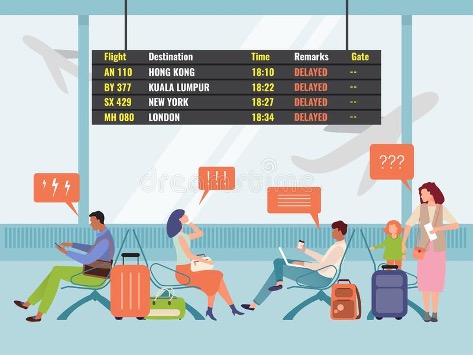Follow this advice to avoid flight disruptions.

Last year was a bad one for flight disruptions. Official data shows flight cancellations hit 2.8%—nearly 50% higher than the historical average—and that doesn’t even include the recent Southwest debacle.
There’s a randomness to flight disruptions that makes them difficult to avoid. But for trips where it’s critical to arrive on time, there are two types of flights you can book to give yourself the best odds.
Flight type #1: Morning flights
Each month the Department of Transportation puts out official statistics on flight delays and cancellations, including a breakdown by departure time.
In 2022, the data shows that while 86% of 6-7 AM flights arrived on time, just 66% of 10-11 PM flights arrived on time.
In other words, first flights of the day have a 20-percentage-point-higher on-time performance than last flights of the day. (Afternoon flights are a few percentage points better than 10 PM flights, but nowhere near as on-time as morning flights.)
There are two reasons why morning flights perform better. First, the weather tends to be better in the morning (fewer thunderstorms).
But more importantly, the plane has been parked at the airport overnight; it’s ready to go. Afternoon flights almost always use a plane that is flying in from elsewhere, and if that flight gets disrupted, your flight is then at risk.
Flight type #2: Nonstop flights
Delays happen far more than cancellations. Over the past five years (excluding 2020 when statistics were, well, weird), 19% of flights in the US were delayed, compared to just 2% of flights that were canceled.
Why is the one in five chance of a delay important? Because delays, while an inconvenience with nonstop flights, can totally upend a connecting flight.
If your nonstop flight is delayed two hours, it’s annoying, but you’ll still arrive, albeit two hours late. If your connecting flight is delayed two hours, for many trips that may mean missing your connection. In some cases, a missed connection could mean waiting until the following day or longer for the next available flight.
Not every delay results in a missed connection, of course, but the possibility is there. Given the gap between the rate of delays and the rate of cancellations, it’s not unreasonable to say connecting itineraries are at least 6x more likely to see a major disruption.
You’ve booked a nonstop flight departing in the afternoon. Is it too late to change your travel plans?
Nope. Why? You’re entitled to free flight changes after booking.
You used to have to pay $200 if you wanted to change your travel dates after booking. But beginning in late 2020, all the full-service US airlines (in other words, not Spirit) permanently got rid of change fees except on basic economy tickets.
You still have to pay the fare difference, if there is one. And if the new fare is cheaper, you may get the difference back in travel credit.
So if you’ve booked an evening flight or a connecting flight and it’s important you arrive on time, you have the flexibility to switch to a morning and/or nonstop flight.
Twist’s Take? Up your chances of avoiding a flight disruption by booking a nonstop morning flight.

